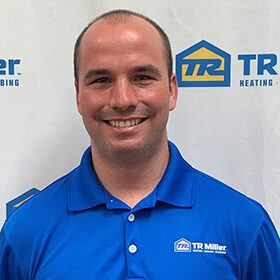Has your furnace reached the end of its life and you need to have it replaced? When choosing a new furnace, it’s important that you understand all of the various options and what to look for. Most older furnaces are single-stage units, but more and more people are now opting to install more advanced variable-speed furnaces. Either type of unit can be a good choice depending on your budget and where you live. The first step to deciding whether a single-stage or variable-speed furnace is the better choice is to understand the differences between the two and how each one works.
Single-Stage and Variable-Speed Furnaces Explained
A single-stage furnace only has two settings On and Off. This means that it produces lots of heat in a short amount of time because it always runs at full power. There are also two-stage furnaces that can operate at full power on extremely cold days or any time lots of heat is needed. This type of furnace also has a lower setting where it operates at approximately 60-65% of its full capacity.
A variable-speed or modulating furnace is the most advanced option, as this type of unit can have several hundred different settings or speeds. The reason that variable-speed furnaces are also referred to as modulating furnaces is that they have a modulating gas valve. Two-speed furnaces have a three-way gas valve that can be fully open, fully closed or partially open. When partially open, less gas flows so that the furnace produces less heat and uses less energy. A modulating gas valve can be anywhere from 25% to 100% open, and it can adjust how much gas flows in 1% increments.
The term variable-speed refers to the fact that this type of furnace is paired with a variable-speed blower or fan. When the furnace is operating at a lower capacity, the blower also slows down so that it circulates air more slowly. This is important both for preventing energy waste and ensuring that the furnace still continues to produce some heat when running at lower power. If the blower continued to run at full speed, it would end up bringing cool air into the furnace much too quickly. This would then lead to the temperature of the heat exchanger quickly decreasing to the point that little to no heat would flow out of the exchanger into the air.
How a Variable-Speed Furnace Works
Variable-speed furnaces are designed to run constantly. The only time this type of furnace will typically ever shut off is on much warmer winter days when your home can stay sufficiently warm without your heating system running. Having your furnace run constantly may seem counterproductive since you might think it would lead to your heating system using more energy, but the opposite is true.
By running continuously, a variable-speed furnace will always keep the temperature consistent so that it almost never has to produce much heat at a time. A variable-speed furnace will usually operate at less than half of its total capacity around 80% of the time. This means it has the potential to cut your heating bills almost in half compared to heating with a single-stage furnace.
One issue with single-stage furnaces is that it takes lots of energy to turn on the inducer motor and blower motor. This means that continually cycling on and off multiple times an hour ends up using more energy than it would if these motors ran constantly at a lower speed. When running at low speed, a variable-speed blower draws only around 25% of the power as a single-speed blower would. A variable-speed blower also starts at a lower speed and only runs faster when needed, which means that the motor uses far less energy to turn on.
In a variable-speed system, the thermostat works alongside the furnace’s control board to monitor how quickly the temperature is increasing. The system will almost always start off at somewhere around 50% power and then automatically adjust the speed of the blower and how much gas flows as needed. If you turn your furnace on when your home is more than 3 or so degrees colder than your desired temperature, the furnace will still start on lower power.
If the furnace isn’t producing enough heat to where the temperature starts to increase within five minutes or so, the furnace will slowly start ramping up. This means that it will produce more heat and circulate the heat throughout the home more quickly so that the temperature starts rising. Once the temperature is within 1 degree of the thermostat setting, the furnace and blower will again start slowing down. It will then run on the lowest setting possible to where it only produces however much heat is needed to maintain the desired temperature and prevent it from decreasing.
If the thermostat detects that the home is becoming warmer than the desired temperature and the furnace is running on its lowest setting, it will signal the furnace to shut down. However, this will normally only happen in the late fall, early spring or on any winter days when the weather is unseasonably warm.
Pros and Cons of Variable-Speed and Single-Stage Furnaces
The only real advantage that single-stage furnaces have over variable-speed units is that they are much less expensive. Depending on the specific brand and model, you’re usually looking at spending a few thousand dollars more for a variable-speed furnace than you would for the same size single-stage unit. Unless you’re just replacing an existing variable-speed unit or you have a variable-speed air conditioner, you’ll also have to install a new variable-speed blower. With a single-stage furnace, you may not have to install a new blower if the existing one is still in good condition. This will also add to the cost since variable-speed blowers are also quite a bit more expensive than single-speed models.
Variable-speed furnaces often aren’t worth the extra cost in warmer climates, but they can definitely pay off in colder places like Chicago. While a variable-speed furnace will have a much higher initial cost, the energy savings it will provide will typically make up for the higher upfront cost within five years or so. A new furnace should last for 15 years or so, which means a variable-speed unit will typically end up costing you less overall in the end.
One of the biggest issues with single-stage furnaces is that they tend to lead to the temperature in the home fluctuating a lot since they constantly cycle off and on. When functioning effectively, a single-stage furnace will almost never run for more than 15 to 20 minutes before shutting off. In larger homes, this often leads to some rooms never receiving enough heat and thus staying colder than the more central parts of the home. This is another area where variable-speed units have a major advantage, as they will ensure that every room stays sufficiently warm throughout the day and night.
At TR Miller Heating, Cooling & Plumbing, we offer a wide selection of new furnaces and our expert technicians can help you decide which type and model will work best for your home. You can also count on us for all of your furnace repair and maintenance needs or if you need any cooling or plumbing service in Plainfield or the Chicago area. For more information on the furnaces we carry or to schedule a consultation, give us a call today.


